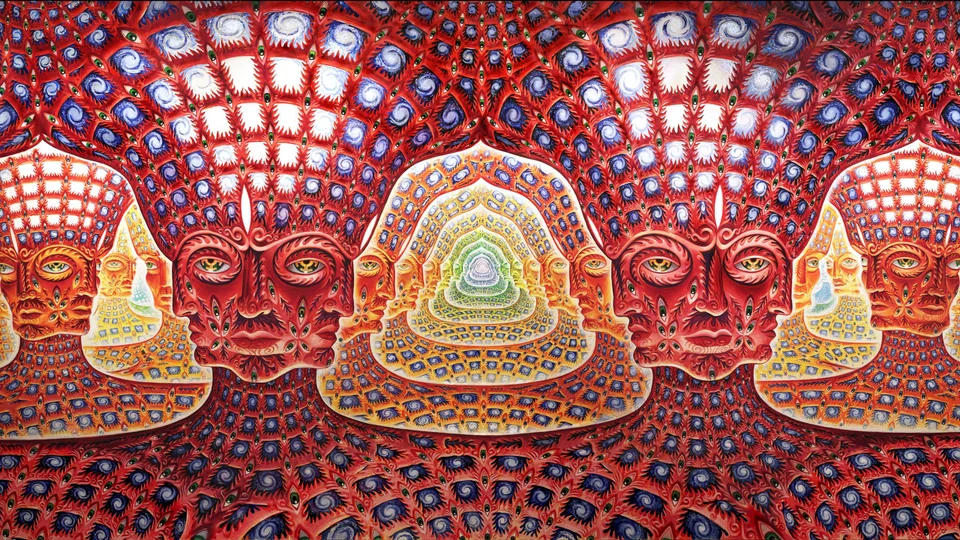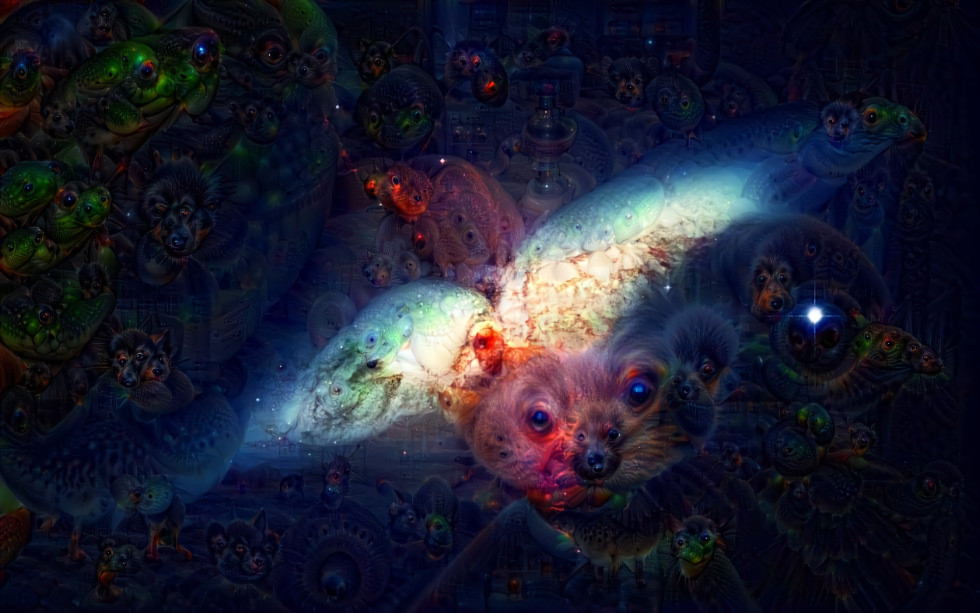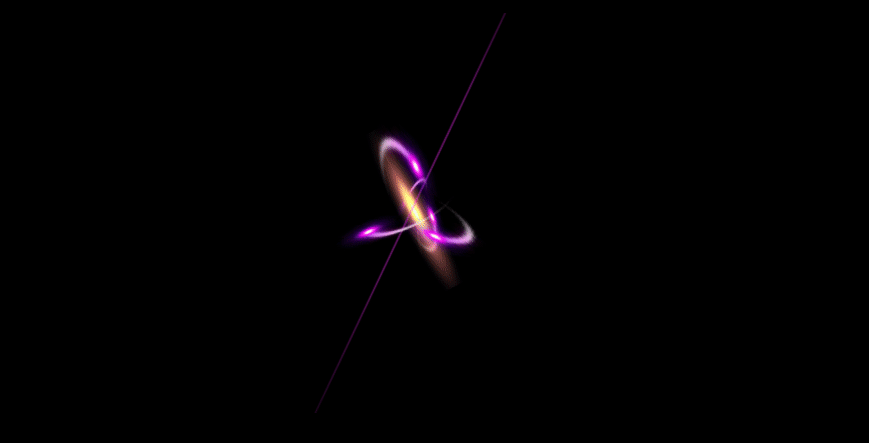


From Brain to Universe
From Profane to Devine


"If the doors of perception were cleansed everything would appear to man as it is, infinite."
~ William Blake (*1757;†1827)













Abstract: 5-Methoxy-N,N-dimethyltryptamine (acronymized as 5-MeO-DMT) is sui generis among the numerous naturally occurring psychoactive substances due to its unparalleled ego-dissolving effects which can culminate in a state of nondual consciousness that is phenomenologically similar to transformative peak experiences described in various ancient contemplative traditions (e.g., Advaita Vedānta, Mahāyāna Buddhism, inter alia). The enigmatic molecule is endogenous to the human brain and has profound psychological effects which are hitherto only very poorly understood due to the absence of scientifically controlled human experimental trials. Its exact neuronal receptor binding profile is a matter of ongoing research; however, empirical evidence indicates that its remarkable psychoactivity is partially mediated via agonism of the 5-HT1A/2A (serotonin) receptor subtypes. Anthropological/ethnopharmacological evidence indicates that various cultures utilized 5-MeO-DMT containing plants for medicinal, psychological, and spiritual purposes for millennia. We propose that this naturally occurring serotonergic compound could be fruitfully utilized as a neurochemical research tool with the potential to significantly advance our understanding of the psychological and neuronal processes which underpin cognition and creativity (e.g., downregulation of the default mode network, increased global functional connectivity, neuroplasticity, σ1 receptor interactions, etc.). An eclectic interdisciplinary perspective is adopted, and we present converging evidence from a plurality of sources in support of our conjecture. Specifically, we argue that 5-MeO-DMT has significant neuropsychopharmacological potential due to its incommensurable capacity to completely disintegrate self-referential cognitive/neuronal processes (viz., “ego death”). The importance of unbiased systematic scientific research on naturally occurring endogenous psychoactive compounds is discussed from a Jamesian radical empiricism perspective, and potential scenarios of abuse are addressed, particularly in the context of neuroethics, cybernetic manipulation, and military research on torture.
Plain numerical DOI: 10.1007/s41470-019-00063-y
DOI URL
directSciHub download
Show/hide publication abstract

Abstract: We introduce a novel hypothesis which states that the therapeutic utilisation of psilocybin has beneficial effects on genetic aging. Ex hypothesi, we predict a priori that controlled psilocybin interventions exert quantifiable positive impact on leucocyte telomere length (telomeres are a robust predictor of mortality and multifarious aging-related diseases). Our hypothesising follows the Popperian logic of scientific discovery, viz., bold (and refutable) conjectures form the very foundation of scientific progress. The ‘psilocybin-telomere hypothesis‘ is formalised as a logically valid deductive (syllogistic) argument and we provide substantial evidence to support the underlying premises. Impetus for our theorising derives from a plurality of converging empirical sources indicating that psilocybin has persistent beneficial effects on various aspects of mental health (e.g., in the context of depression, anxiety, PTSD, OCD, addiction, etc.). Additional support is based on a large corpus of studies that establish reliable correlations between mental health and telomere attrition (improved mental health is generally correlated with longer telomeres). Another pertinent component of our argument is based on recent studies which demonstrate that “meditative states of consciousness” provide beneficial effects on genetic aging. Similarly, psilocybin can induce states of consciousness that are neurophysiologically and phenomenologically significantly congruent with meditative states. Furthermore, prior research has demonstrated that a single dose of psilocybin can occasion life-changing transformative experiences (≈ 70% of healthy volunteers rate their experience with psilocybin amongst the five personally most meaningful lifetime events, viz., ranked next to giving birth to a child or losing a loved one). We postulate that these profound psychological events leave quantifiable marks at the molecular genetic/epigenetic level. Given the ubiquitous availability and cost effectiveness of telomere length assays, we suggest that quantitative telomere analysis should be regularly included in future psilocybin studies as an adjunctive biological marker (i.e., to facilitate scientific consilience via methodological triangulation). In order to substantiate the ‘psilocybin-telomere hypothesis’ potential neuropsychopharmacological, endocrinological, and genetic mechanisms of action are discussed (e.g., HPA-axis reactivity, hippocampal neurogenesis, neurotropic growth factors such as BDNF, 5-HT2A receptor agonism, neuroplasticity/synaptoplasticity, brain-wide alterations in neuronal functional connectivity density, involvement of the SLC6A4 serotonin transporter gene, inter alia). The proposed research agenda is thus intrinsically highly interdisciplinary, and it has deep ramifications from a philosophy of science perspective as it connects the epistemic level (qualitative experiential phenomenology) with the ontic level (quantitative molecular genetics) of analysis. In the long term, multidisciplinary and innovative investigations of the ‘psilocybin-telomere hypothesis‘ could contribute to the improvement of senotherapeutic psychological interventions and the identification of novel geroprotective and neuroprotective/restorative pharmaceutical targets to decelerate genetic aging and improve well-being and quality of life during the aging process.
Plain numerical DOI: 10.1016/j.mehy.2019.109406
DOI URL
directSciHub download
Show/hide publication abstract
The most complex physical object in the known universe is the human brain and the most complex mental phenomenon is the human psyche. Humankind has travelled through outer space and we now possess detailed charts of the moon and many other extraterrestrial objects. However, hitherto modern science is unable to provide a comprehensive cartography of the varieties of human experience (Fisher, 1971), despite the efforts of the extraordinary Swiss depth psychologist Carl Gustav Jung who provided a rudimentary “skeletal” map of the psyche. Ergo, the great frontiers of 21st century science are internal and psychological and it should be psychologies primary focus to systematically chart these largely unexplored “antipodes of mind” – the “terra incognita” – as Aldous Huxley eloquently formulated it (Huxley, 1956, p.71). In this context, it has been effectively argued that the discovery of several unique psychoactive chemical substances is methodologically as important to the study of the mind as the invention of the microscope to progress in chemistry or the telescope to astronomy (Grof, 2000, p.297).
Germann, C. B. (2016). Transcending academic and epistemic boundaries: Psychoactive tryptamines and the frontiers of human exploration.
Off the Lip Conference - Transdisciplinary Approaches to Cognitive Innovation. Conference Proceedings:
https://pearl.plymouth.ac.uk/handle/10026.1/4271
Fulltext (PDF): http://psychedelic-lab.com/wp-content/uploads/dmt-germann.pdf


Plain numerical DOI: 10.1017/S1062798719000073
DOI URL
directSciHub download
Show/hide publication abstract
Plain numerical DOI: 10.18653/v1/W18-5437
DOI URL
directSciHub download
Show/hide publication abstract
Plain numerical DOI: 10.1016/j.neunet.2014.09.003
DOI URL
directSciHub download
Show/hide publication abstract
Plain numerical DOI: 10.1007/978-3-030-01313-4_15
DOI URL
directSciHub download
Show/hide publication abstract
Plain numerical DOI: 10.1556/2054.2019.031
DOI URL
directSciHub download
Show/hide publication abstract
Plain numerical DOI: 10.1017/ipm.2020.94
DOI URL
directSciHub download



